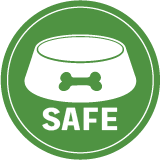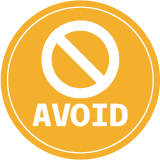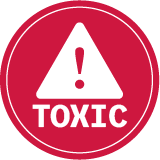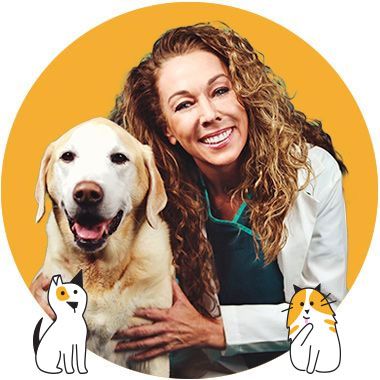When Chewing Turns Into Chomping Trouble
This pet behavior is more than a nuisance — it can lead to serious health risks, costly emergency surgeries, and lasting behavioral issues.

STORY AT-A-GLANCE
- Pica is more than playful chewing — it is a behavioral or medical condition where dogs eat non-food items like socks, rocks, or paper, which can lead to serious health risks
- Dogs with pica risk choking, intestinal blockages, dental injuries, or poisoning. Even seemingly harmless items can trigger life-threatening complications requiring emergency care or surgical removal
- Causes of pica range from nutrient deficiencies, chronic pain, and gastrointestinal upset to anxiety, boredom, and compulsive behaviors. High-energy dogs and puppies without proper stimulation and structure are especially vulnerable
- Diagnosis requires diagnostic testing with a veterinarian to assess for illness, followed by a close look at lifestyle, stress levels, and home environment to determine the root cause of the behavior
- Treatment combines medical care, environmental changes, and behavior training. With time, patience, and professional guidance, many dogs overcome pica and go on to live safer, healthier lives
As a loving pet parent, you have likely come to accept a certain amount of curious chewing as a normal part of canine life. Maybe your pup gnaws on the corners of furniture, tugs socks from the laundry, or playfully mouths toys until they are frayed. But what if your dog starts not just chewing but swallowing objects like pebbles, dirt, or even paper towels?
If this behavior goes beyond occasional mischief and turns into a repeated habit, it may be more than a quirky personality trait. It could be a medical and behavioral condition known as pica. Fortunately, with the right understanding and care, this condition is manageable — and in some cases, fully resolvable.
What Is Pica in Dogs?
Pica is a behavioral and medical condition in which an individual persistently eats non-food items. This goes beyond the typical chewing of shoes or sticks. Dogs with pica actually ingest objects that hold no nutritional value and are not meant to be consumed. Common targets include:1
- Rocks and gravel
- Socks, underwear, and towels
- Plastic items
- Paper, cardboard, and tissues
- String, ribbon, and rubber bands
- Wood, sticks, or mulch
- Dirt, sand, or clay
One example of pica behavior is what is called coprophagia, which is when dogs ingest stool. In nursing females, coprophagia is a normal behavior as licking the anus helps stimulate bowel movements in very young puppies. It is also a common behavior in young puppies, though most grow out of it eventually.2 Although unpleasant, coprophagia is often treated differently from true pica and may require a separate approach to management.
It is important to distinguish between normal exploratory chewing and true pica. Most dogs, especially puppies, chew as a way to understand their environment or soothe teething discomfort. However, chewing becomes pica when it consistently results in swallowing of the non-food item — and that shift carries real risks.
Why Is Pica So Dangerous?
Ingesting non-food objects is far from harmless because even small items can lead to severe, and sometimes life-threatening, complications. These include:3
- Choking hazards — Small or oddly shaped items can obstruct the throat or windpipe.
- Gastrointestinal blockages — Foreign materials can get lodged in the stomach or intestines, blocking the passage of food, water, and waste. In some cases, surgery is needed to remove the object.
- Perforation injuries — Sharp objects like splinters or plastic shards may puncture the stomach or intestinal walls.
- Dental trauma — Chewing on hard materials can break teeth or damage gums.
- Poisoning — Items like batteries, toxic plants, or cleaning products can be poisonous if ingested.
Clinical signs of trouble may include vomiting, diarrhea, abdominal swelling, excessive drooling, coughing, pawing at the mouth, lethargy, gagging, or straining during bowel movements. If your dog exhibits any of these symptoms and has a history of swallowing inappropriate items, seek veterinary attention without delay.4
Puppies and young dogs are particularly susceptible to pica as part of their natural exploration of their environments. However, when this behavior persists into adulthood or escalates in frequency, intervention is needed.
What Causes Pica and Which Breeds Are at a Higher Risk?
Determining why a dog has pica is not always simple. The condition can be caused by a wide range of underlying issues, both medical and behavioral. In many cases, pica is a response to physical discomfort or illness. Some dogs may eat odd materials to soothe gastrointestinal upset or satisfy a nutritional deficiency. Common medical causes include:
- Iron-deficiency anemia
- Liver or pancreatic disease
- Diabetes
- Intestinal parasites, such as hookworms
- Inflammatory bowel disease (IBD)
- Malabsorption syndromes
- Pain
- Medication-induced hunger (e.g., from prednisone or phenobarbital)
Interestingly, studies have shown that dogs with untreated pain conditions — like arthritis or hip dysplasia — may develop pica.5 Once the pain is managed appropriately, the abnormal eating behavior often resolves.
In addition, pica can also be rooted in emotional or behavioral issues. Dogs may turn to non-food items for comfort, stimulation, or attention. Some common behavioral triggers include boredom, obsessive compulsive disorder, and separation anxiety. Some do it as a way to seek attention. While any dog can develop pica, certain groups may be more vulnerable, including:
- Puppies — Young dogs explore the world through their mouths and are more likely to ingest inappropriate items.
- High-energy breeds — Sporting and working breeds, such as Labradors and other Retrievers, may develop pica if their physical and mental needs are unmet.
- Dogs with minimal stimulation — A lack of toys (particularly puzzle toys), exercise, or social interaction can lead to destructive and ingestive behaviors.
- Dogs with inconsistent or chaotic routines — Structure and predictability are crucial to preventing anxiety-driven behaviors.
Diagnosing and Treating a Dog with Pica
Because the potential causes of pica are so varied, diagnosing it requires a thorough and methodical approach. Your veterinarian will typically begin with a variety of tests, such as:
- A complete physical examination
- Blood work (including a complete blood count, serum chemistry profile, and electrolytes)
- Fecal analysis to check for parasites or infections
- Urinalysis
- Radiographs (X-rays) and/or ultrasound to locate ingested foreign bodies and assess for obstructions or perforations
- Nutritional testing to evaluate malabsorption or deficiencies in nutrients like folate and cobalamin6
- Endocrine testing may also be included to assess for Addison’s disease, Cushing’s disease, or thyroid disease
If all medical causes are ruled out, your veterinarian will then explore behavioral, emotional, and environmental factors. They may ask about your dog's daily routine, access to stimulation, history of stress, or situations where the pica tends to occur.
Treatment depends on the underlying cause of the pica. For many dogs, a combination of medical care, environmental adjustments, and behavioral training yields the best results.
If your dog's pica stems from an illness, treatment should focus on addressing that condition. This may require medications, supplements and nutritional support, pain management, deworming and parasite control, and/or surgical interventions. If the condition is curable or manageable, the pica may disappear entirely once your pet feels better.
Behavioral Management and Lifestyle Changes
If pica is rooted in behavioral or emotional causes, your veterinarian may recommend the following strategies:7
- Supervise and keep items away from your pet's reach — Lock items in cabinets, secure trash cans and store your things in lidded or sealed hampers. If your pet is going outdoors, watch for instances when they eat gravel or mulch. Use a leash during walks to prevent spontaneous eating. If the behavior is too difficult to manage, consider using a basket muzzle (not restrictive muzzles) that allows panting and drinking while blocking ingestion.
- Feed a healthy diet — In some cases, this is all it takes to ward off compulsive eating. Talk to your veterinarian about species appropriate, minimally processed diets; this could be the missing nutritional factor for your dog.
- Increase their mental and physical stimulation — Provide interactive toys, puzzles, and food-dispensing devices. Rotate toys to maintain novelty and interest. Engage your pet in new experiences, training exercises, or agility games, and offer safe, chewable items to satisfy their oral stimulation needs.
- Establish a routine — Follow regular feeding times, walks, and play sessions to reduce anxiety and build security.
- Use positive reinforcement and response substitution — Teach your dog alternative behaviors when the urge to eat non-food items strikes.
- For severe pica, consider professional training or behavior therapy — Working with a certified veterinary behaviorist can be life-changing. These professionals can develop tailored behavior modification plans and, when appropriate, recommend medications to ease anxiety or compulsions.
Can Natural Remedies Help?
For dogs with mild anxiety, natural supplements and tools may support behavioral treatment. Examples include pheromone diffusers and collars, calming supplements, and probiotics to support gut health. Homeopathic therapies can also be a game-changer; use a trained veterinary homeopath to help determine the best course of therapy for your pet.
Remember to always consult your veterinarian before starting any supplement or new therapy, especially if your dog is on medication.
Pica Can Be a Problem, but It's Manageable
Pica in dogs is more than just a quirky or frustrating habit — it can be a sign of deeper physical or emotional issues that demand attention. Whether caused by pain, illness, poor nutrition, anxiety, or boredom, pica is a condition that requires compassion, consistency, and proactive care.
With the right combination of medical treatment, environmental changes, and behavioral support, most dogs with pica can live safe, fulfilling lives. And while progress may be slow at times, each step forward is a testament to the strength of the bond between you and your dog.
By staying informed, observant, and committed, you can be your dog's best advocate — and turn a chomping challenge into a success story.










